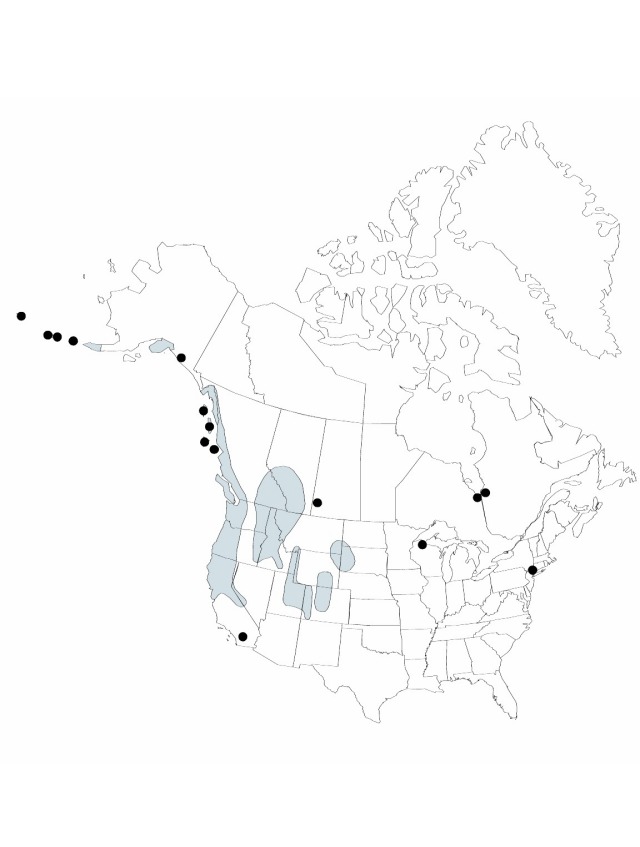Difference between revisions of "Juncus ensifolius var. ensifolius"
Treatment appears in FNA Volume 22.
imported>Volume Importer |
imported>Volume Importer |
||
| Line 42: | Line 42: | ||
|publication year= | |publication year= | ||
|special status= | |special status= | ||
| − | |source xml=https:// | + | |source xml=https://bitbucket.org/aafc-mbb/fna-data-curation/src/2e0870ddd59836b60bcf96646a41e87ea5a5943a/coarse_grained_fna_xml/V22/V22_205.xml |
|genus=Juncus | |genus=Juncus | ||
|subgenus=Juncus subg. Ensifolii | |subgenus=Juncus subg. Ensifolii | ||
Latest revision as of 20:29, 5 November 2020
Leaves 2–15 dm ×x 3–6 mm. Inflorescences 1–5(–11) heads; heads usually globose. Flowers: outer tepals 2.7–3.6(–4) mm; inner tepals 2.2–3(–3.5) mm; stamens 3. Capsules included to slightly exserted, oblong-ovoid to ellipsoid, 2.4–3.5 mm. Seeds 0.4–0.6, not tailed. 2n = 40.
Phenology: Fruiting summer.
Habitat: Wet meadows, marshy areas, wet granite areas, shores, banks and ditches, often montane
Elevation: 400–3000 m
Distribution

Alta., B.C., Ont., Que., Sask., Alaska, Calif., Colo., Idaho, Mont., Nev., N.Y., Oreg., S.Dak., Utah, Wash., Wis., Wyo., Mexico (s to Veracruz, Puebla, Guerrero), Europe, e Asia.
Discussion
This species is probably introduced in Wisconsin and New York as well as in northern Europe.
Selected References
None.
Lower Taxa
None.